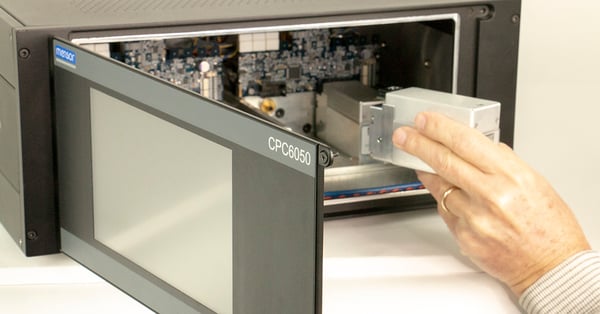Automatic pressure controlling calibrators have risen in popularity with their ease of use, reduced resource requirement and fast, hassle-free operation. However, the price for buying one could be anywhere from $6,000 to as high as $50,000. This, compared to their manual counterparts (anywhere from $1,500 to $5,000), is pretty steep. A variety of things contribute to controller popularity as well as the price difference. The biggest of these is automation, followed by the modularity of pressure modules, accuracy of the transducers, maximum and minimum pressure range, control parameters of the regulators, type of communication and auxiliary functions, to name a few.
Understanding these features and matching them to your requirements could significantly reduce the overall cost of the calibrator you choose.
System Automation
Automated pressure calibrating controllers can be run programmatically using remote communication to set test procedures and record results. This ability to function independently of an operator in a production or calibration setting provides huge savings in time and consistent test procedures and results. Modern-day controllers are equipped with multiple communication protocols and hardware platforms to efficiently communicate with a variety of user systems.
Modularity
Pressure controllers have a regulation module and a measuring pressure transducer housed inside or outside the chassis. Multichannel pressure controllers are more expensive than their single channel counterparts because of the multiple regulators and transducers present to form those channels. This is primarily because dual channel calibrators allow for two calibrations to be done on one instrument simultaneously and thus reduce the time to complete overall calibrations by half. Dual channel instruments, when chosen strategically, can also increase the overall dynamic range of calibration.
In addition, controllers like the CPC6050 Modular Pressure Controller allow for removable transducers, which enhance support and calibration of multiple ranges of DUTs using one instrument. The cost and resource requirement of a completely new instrument is significantly higher compared to a spare pressure transducer.
 Transducers are easily removed from the front panel of the controller
Transducers are easily removed from the front panel of the controller
Accuracy and Pressure Ranges
Pressure controllers come in many different accuracy classes, but it is typical to find their accuracies from 0.025% to 0.008% for benchtop models, and anywhere from 0.1% to 0.025% for portable pressure regulating calibrators. The higher the accuracy of the instrument, the greater the price. Along with the accuracy, certain pressure ranges or pressure types could add to the cost. Typically, higher pressure ranges (7,000 psi and above) and ultra low pressure ranges (1 psi and below) require more complex regulation technologies to maintain a highly stable and safe functionality. The availability of higher accuracies and multiple ranges provides more flexibility in the variety of devices and the ranges and accuracies that can be calibrated with any given pressure calibrator system choice.
Control Parameters
Control stability is defined by a tolerance around a particular setpoint in which the pressure controller determines the reading to be stable. Typically, controllers vary significantly in their control stability. Laboratories have stability specifications as low as 0.003% of range, while industrial specifications are generally from 0.05 to 0.1% of full scale. The control stability effectively indicates the strength of pressure regulation - the better the stability, the higher the reliance on taking the measurement at the desired nominal setpoint. For this reason, the laboratory specifications on control stability are typically costlier than the industrial specifications.
Speed of control is a parameter that is often inversely proportional to the control stability. This parameter determines how quickly the instrument can move from one stable setpoint to another in its range. Higher speed controllers are desired in production environments with the need for high throughput, but there is a compromise made with the control stability of the instrument.
Multi-Function Use
Modern-day pressure calibrating controllers come equipped with auxiliary features that enhance their use outside of calibration, such as burst testing, pressure switch testing, delta pressure measurement and pressure leak testing. These additional features and options can add to the cost of the pressure controller. However, each of these features diminishes the need for separate standalone equipment that is dedicated to the specialized application.
Conclusion
These are just a few of the factors that contribute to the cost of the pressure controllers. Despite the one time cost of the pressure controller being greater than their manual counterpart, the long term value in reduced resource consumption, time efficiency, and convenience outweigh the higher price. Becoming familiar with these parameters and tradeoffs will enable you to decide on the right pressure controller for your needs.
Related Reading:


